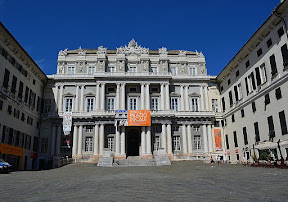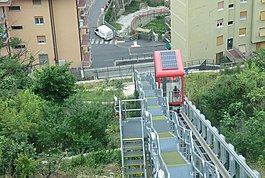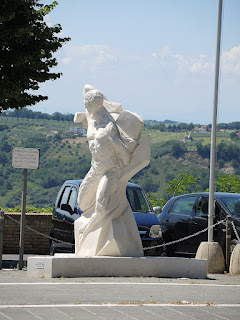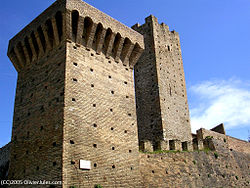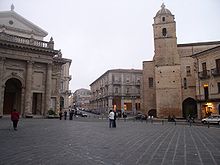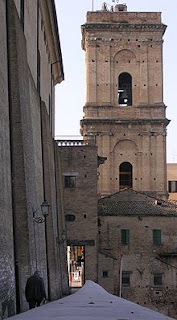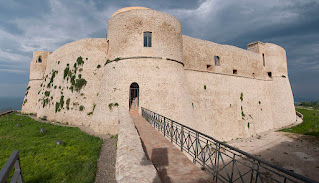Resistance-inspired novel hailed as masterpiece
 |
| Renata Viganò's later writing career was coloured by her time in the Resistance |
L’Agnese va a morire, Viganò’s second novel, won the Viareggio Prize, a prestigious literary award, and was translated into 14 languages and subsequently turned into a film.
Viganò, who had volumes of poetry published as a teenager and became a prolific contributor to the news and editorial pages of a number of newspapers, wrote L’Agnese va a morire from the viewpoint of a newspaper reporter, which placed it in the neorealist genre that became popular with film-makers in the postwar years.
Born in Bologna in 1900, Viganò’s father, Eugenio, was a socialist from Reggio Emilia but ran his own business. Her mother, Amelia, hailed from a wealthy family and they were initially comfortably off.
A talented writer from a young age, she had volumes of poetry published at the ages of 13 and 16 and went to a classical liceo - high school - with dreams of becoming a doctor.
However, the economic consequences of Italy’s involvement in the First World War caused Eugenio’s business to collapse. With the family suddenly poor, Renata had to give up high school in order to contribute to the household’s income, finding work in local hospitals, first as a janitor but eventually as a nurse.
 |
| Viganò with her husband, Antonio Meluschi, with whom she shared her wartime experience |
As World War Two began, her politics became increasingly influenced by the left and with Italy’s formal surrender to the Allies in 1943 she and her husband decided to take a more active role in fighting fascism by joining the Resistance movement.
Under the name of Contessa, she was a courier and nurse in a partisan brigade commanded by Meluschi, first in Romagna and then in the wetlands and lagoons of the Valli di Comacchio, where she directed what could be described as a partisans' health service.
Unlike many of their fellow fighters, Viganò and her husband survived the war and it was soon afterwards that she began working on L’Agnese va a morire.
Heavily autobiographical, set in the Valli di Comacchio during the eight months of German occupation of Italy that preceded the country’s liberation, the protagonist is Agnese, a middle-aged washerwoman, who responds to the death of her husband, Palita, at the hands of the Germans, by beginning to collaborate with the partisans as a liaison officer.
The novel came to the attention of Natalia Ginzburg, herself destined to become an award-winning writer, who was then an editor at Einaudi, and was identified by the renowned literary critic Maria Corti as one of the finest works on the Resistance.
 |
| Viganò in later life; she invariably had a cat for company as she worked |
Among Viganò's subsequent works were other books on the battle for Italy’s freedom, including Donne della Resistenza (1955) and Matrimonio in brigata (1976).
She also established herself in the years after the war as one of Italy’s most incisive voices during the country’s reconstruction, her contributions from the pages of l'Unità, the official Communist Party newspaper, reaching a wide audience of not only women.
Two months before her death at the age of 75, she was recognised by the city of Bologna for her contribution to journalism.
Bologna dedicated a garden to her with a small monument in the Savena district, while the municipalities of San Lazzaro, Pontecchio and Ferrara named streets after her.
 |
| The marshes of the Valli di Comacchio are attractive to walkers and birdwatchers |
The marshes of the Valli di Comacchio, while reduced in size by land reclamation in recent years, are still one of the largest lagoon systems in Italy. They cover an area of more than 11,000 hectares between Comacchio and the river Reno and are connected to the sea via canals. They form an environment of rare beauty within the Po Delta Park, the stretches of water in some places divided by embankments and ancient sandbars. The area is one of rich birdlife, both resident and migratory, and visitors are attracted by walks along the banks, excursions by boat and birdwatching.
 |
| The Porta Mascarella, where Via Mascarella ends, is one of 10 remaining gates in Bologna's outer wall |
Via Mascarella, where Renata Viganò lived with her husband in Bologna before they moved out of the city to fight with the Resistance movement in World War Two, is an historic thoroughfare that dates back at least until the early 13th century. Stretching from Via delle Belle Arti to Piazza di Porta Mascarella, it is the only road leading to one of the city’s outer gates that is completely outside the Cerchia del Mille, the second of the three circles of ancient walls built to enclose the city at various points in history. The oldest walls of which visible remains remain today are those of the Cerchia di Selenite, built following the barbarian invasions, at the time of the decline of the Western Roman Empire in the third century and discovered only in the 1920s. These walls enclosed an area of only about 20 hectares. The Cerchia dei Mille was erected probably in the 11th century with the expansion of the city and the growth of new villages outside the original walls. Construction of the third ring began 200 years later. Much of this circle was demolished at the start of the 20th century to make way for a ring road, although thankfully 10 of the 12 gates were preserved.
Also on this day:
1554: The death of poet Gaspara Stampa
1857: The birth of opera composer Ruggero Leoncavallo
1939: The birth of Mafia boss Stefano Bontade
1964: The birth of conductor Gianandrea Noseda
2021: The death of singer and actress Milva


.PNG)
